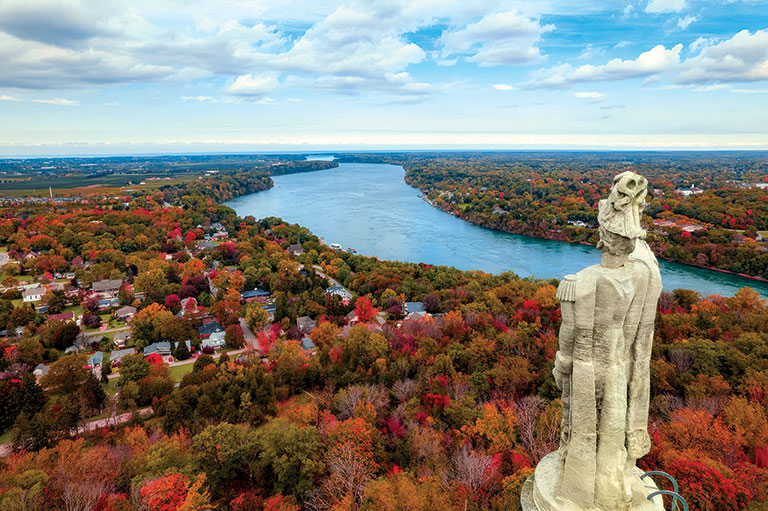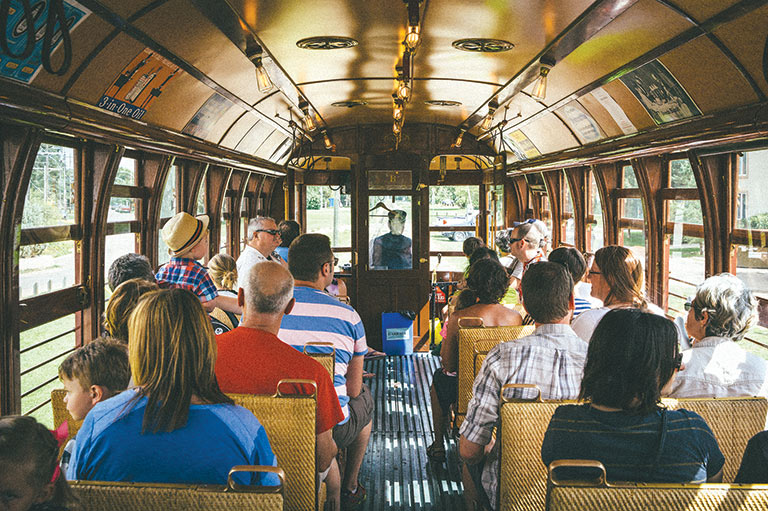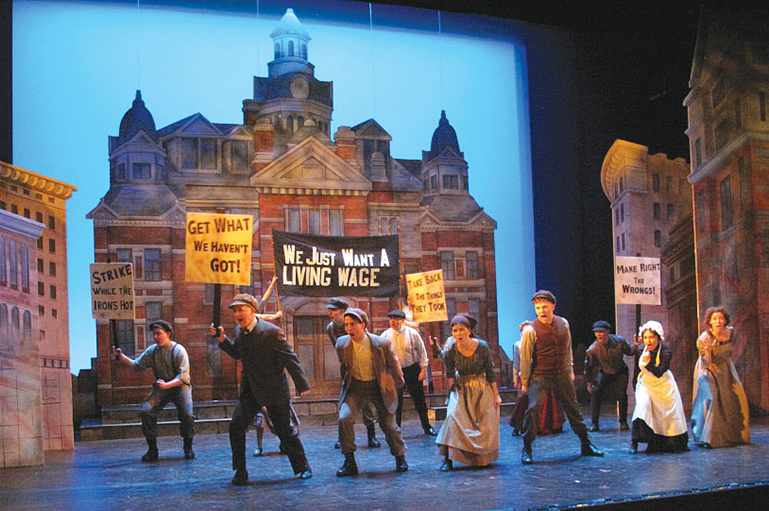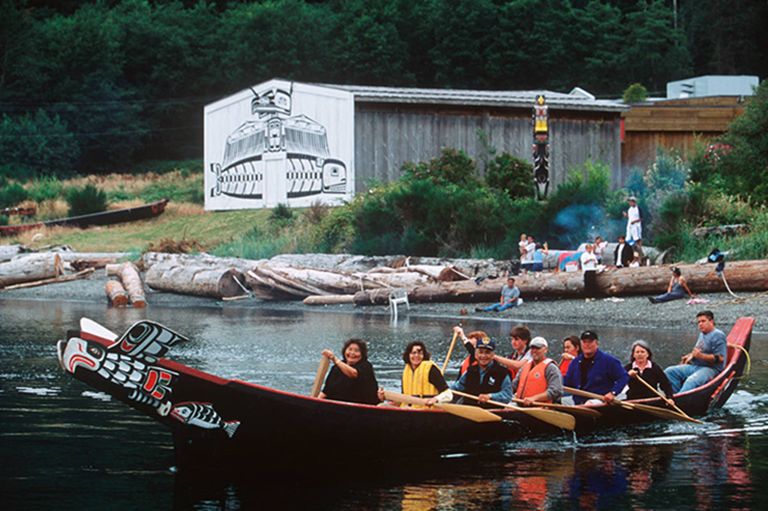Winter Air and Warm Cabins

There is nothing more glorious on a winter day than cross-country skiing in Gatineau Park, with new snow glistening on tree branches and the azure sky shining above. Originally inhabited by the Algonquin Anishinaabe, this forested expanse of the Gatineau Hills in Quebec’s Outaouais region, a short drive north of Ottawa, became the realm of lumberjacks and homesteaders in the nineteenth century. It was later the private cottage country for Ottawa’s business and political elite, before being designated a public park in 1938.
Now covering more than 360 square kilometres, Gatineau Park offers more than two hundred kilometres of cross-country ski trails plus additional trails for snowshoeing, biking, and hiking. Rustic cabins left behind by lawyers and lumbermen now provide shelter for outdoor enthusiasts.
One of my favourite jaunts is the ten-kilometre round trip from parking lot P16 along Trail 50 to Herridge Chalet. Built in 1880, the square-cut log cabin was designed as a pioneer farmhouse at a time when the Outaouais region was a hub of the logging industry. In 1926 it was purchased as a chalet by William Duncan Herridge, an advisor — and, later, son-in-law — to Prime Minister Richard Bedford (R.B.) Bennett.
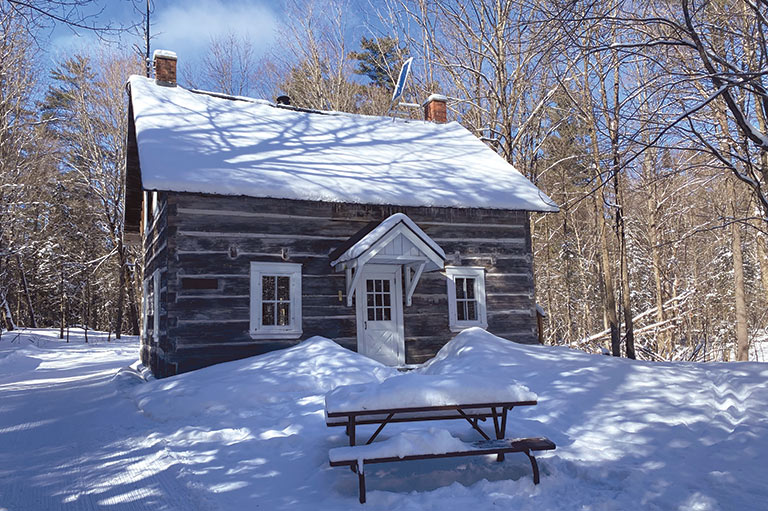
Trail 50 begins with a short stretch through an open field, a nippy experience if the north wind is blowing. You soon reach the shelter of trees, and the effort of kicking and gliding your way up a gentle but continuous incline is sure to warm your chilly toes and fingers. The trail is wide and straight enough for families and beginners, yet it presents enough of an uphill challenge to deter most of the limb-flailing skate skiers (using one of the two main cross-country skiing techniques) who flock to the main parkways on fine winter weekends.
Half a kilometre before Herridge is a turnoff to the smaller Healey cabin, built by Irish homesteaders Edward and Bridget Healey around 1863. Both cabins are heated by wood-burning stoves. Park etiquette requires the first arrivals of the day to light the fire and that subsequent visitors keep it stoked with wood from the outdoor woodpile. Abundant picnic tables inside each cabin provide plenty of places for skiers to fortify themselves with a packed lunch and a Thermos of tea or hot chocolate.

For a longer day of skiing, head out early to parking lot P10, the trailhead of Fortune Lake Parkway. Getting up early is key because parking lot P10 is located partway up a hill that leads to Trail 1, also known as Ridge Road, and its advantageous location means it fills up quickly. Spots are rarely available after 9:00 a.m., and latecomers — relegated to the hill-bottom parking lots P9 or P11 — must endure an extra slog along a steep trail through the woods before reaching the Fortune Lake Parkway trailhead.
From the trailhead, it’s a matter of perseverance and proper waxing as you pant your way up, up, and further up the hill. Reaching the top after two kilometres, you’ll behold with joy the flat expanse of Ridge Road stretching out in either direction. According to Katharine Fletcher’s book Historical Walks: The Gatineau Park Story, Ridge Road might once have been an Algonquin footpath. It was widened into a road in the early nineteenth century by settlers who required access to their homesteads.
From the junction with Fortune Lake Parkway, a right turn on Ridge Road will take you half a kilometre to Shilly Shally cabin. Originally built as a winter logging camp, Shilly Shally was the country retreat of photographer Rosemary Gilliat Eaton from 1954 to 1965. Another kilometre beyond Shilly Shally is Huron cabin, built in 1964 in the clearing where the nineteenth-century homestead of Michael Grimes and his wife, Catherine Ryan, formerly stood.
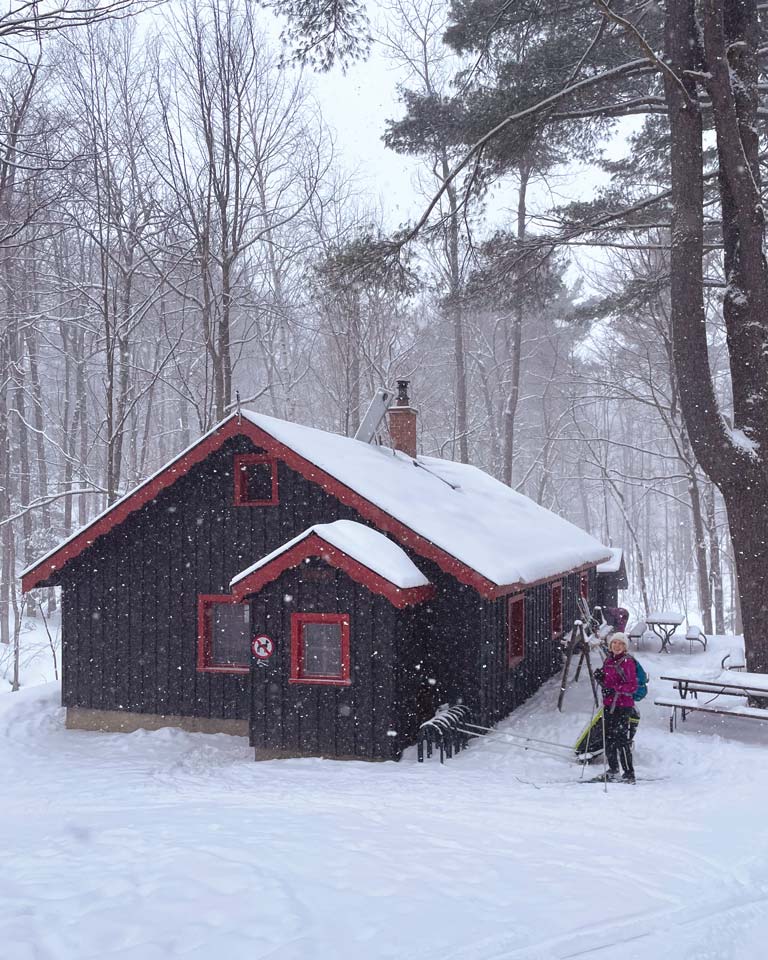
Making a left turn instead onto Ridge Road will take you to Keogan cabin. This wood cabin was built in 1923 by the Cliffside Ski Club to provide overnight shelter for club members. Various small trails leading from Ridge Road into the woods are great for people who are keen to explore off the beaten track.
The best way to experience winter in Gatineau Park is to stay overnight at a ski-in cabin. There are two options, each of them less than two kilometres by ski from parking lot P20: the Pines cabin, which sleeps six people, and the Philippe cabin, which sleeps sixteen. The cabins are equipped with bunk beds, a table and chairs, pots and pans, and a wood stove, but sojourners have to haul in their own sleeping bags, food, and water, as well as candles or electric camping lanterns and the ever-indispensable cribbage board and deck of cards.
Online bookings for overnight cabins open in the fall and fill up faster than you can say the name of legendary Norwegian-Canadian cross-country skier “Jackrabbit” Johannsen. If you can’t snag a cabin when reservations initially open, keep an eye out for cancellations throughout the season. Availabilities often appear, especially midweek. For those who miss out altogether on cabin bookings, yurts and four-season tents are also available, and the truly hardy can pitch their own tents in the park’s winter campsites, each of which is equipped with a firepit and a picnic table.
Whether for a quick jaunt or an overnight stay, today’s outdoor enthusiasts — like those who came before them — will find in Gatineau Park a magical getaway not far from the nation’s busy capital.
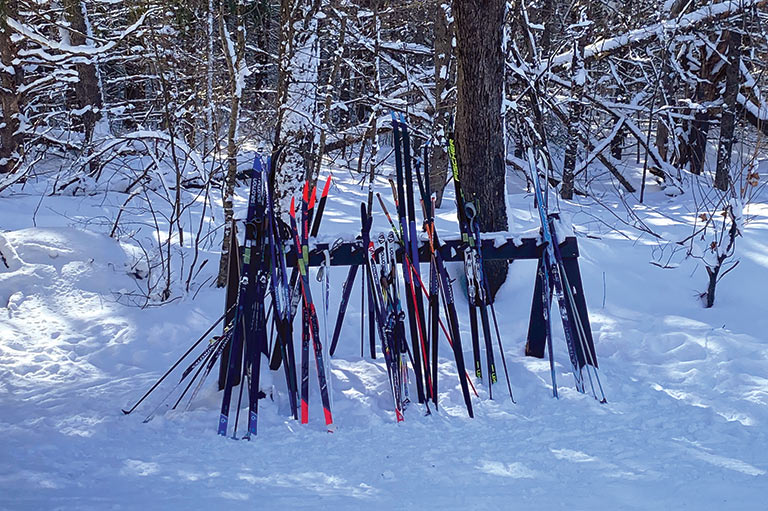
With 7 uniquely curated newsletters to choose from, we have something for everyone.
IF YOU GO
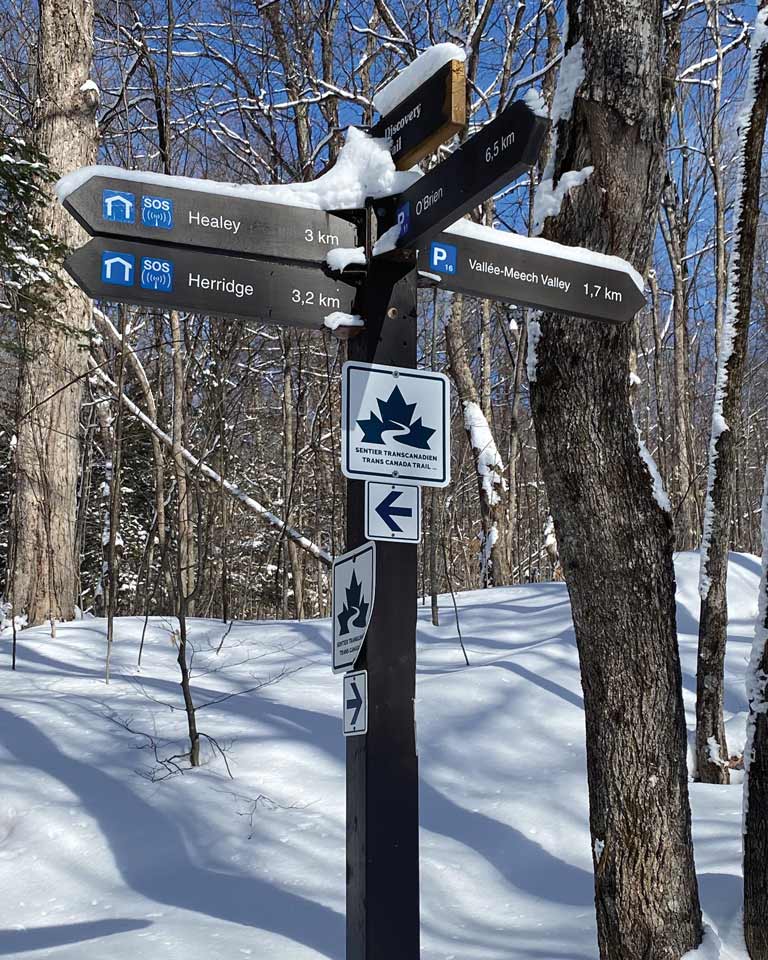
FINDING YOUR WAY: From downtown Ottawa-Gatineau, the nearest trailheads are about a fifteen-minute drive, although it can take up to an hour to reach more remote trails. The National Capital Commission’s website for Gatineau Park provides driving directions and trail maps, as well as information on trail closures, weather, and ski conditions. Paper maps are available from the visitor centre at 33 Scott Road in Chelsea, Quebec.
WHAT TO BRING: Wear thermal clothing and dress in layers. For a day of cross-country skiing, bring water, snacks, and a Thermos full of your favourite hot beverage. For overnight stays, bring sleeping gear plus food, water, dishes, soap, flashlights, candles, and a bag for waste.
APRÈS-SKI: The Chelsea Pub at 238 Chemin Old Chelsea offers hearty fare and a selection of Quebec craft beers.
We hope you’ll help us continue to share fascinating stories about Canada’s past by making a donation to Canada’s History Society today.
We highlight our nation’s diverse past by telling stories that illuminate the people, places, and events that unite us as Canadians, and by making those stories accessible to everyone through our free online content.
We are a registered charity that depends on contributions from readers like you to share inspiring and informative stories with students and citizens of all ages — award-winning stories written by Canada’s top historians, authors, journalists, and history enthusiasts.
Any amount helps, or better yet, start a monthly donation today. Your support makes all the difference. Thank you!
Themes associated with this article
Advertisement
You might also like...
Save as much as 40% off the cover price! 4 issues per year as low as $29.95. Available in print and digital. Tariff-exempt!



